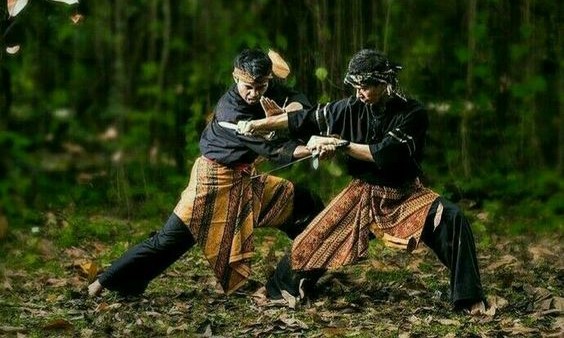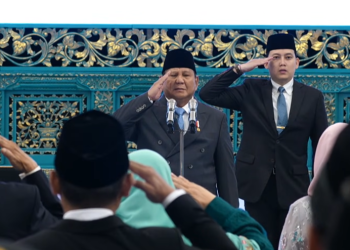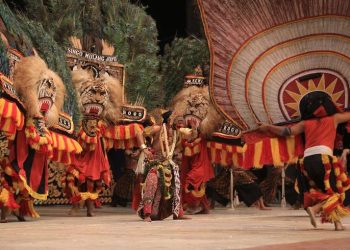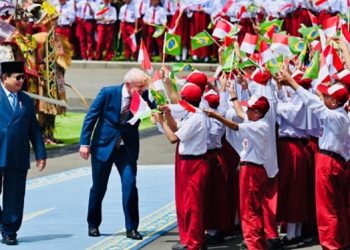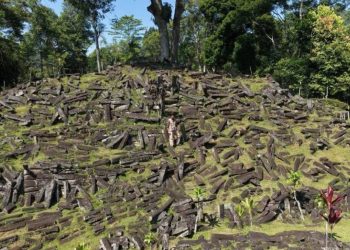Jakarta, Indonesia Sentinel — Pencak Silat, a traditional martial art indigenous to the Indonesian archipelago, has been passed down through generations as both a form of self-defense and a cultural heritage. More than just combat techniques, Pencak Silat embodies moral values in every movement, making it a significant part of Indonesia’s rich cultural heritage.
The Essence of Pencak Silat
Pencak Silat focuses on self-defense skills that include blocking, striking, and countering attacks, with or without the use of weapons. The term “Pencak Silat” itself is a combination of two words: “Pencak,” which refers to basic defensive movements bound by rules, and “Silat,” which encompasses a complete set of martial arts techniques that draw from spiritual and inner strength.
Originating in West Sumatra, this martial art has evolved, spreading across the Indonesian archipelago and gaining popularity internationally. Pencak Silat has even found its place in neighboring countries such as Malaysia, Brunei, Singapore, southern Philippines, and southern Thailand, reflecting the widespread influence of Nusantara culture.
Historical Roots and Development
The roots of Pencak Silat can be traced back to the hunting and warfare skills of Indonesia’s indigenous tribes. These early warriors drew inspiration from observing the survival tactics of animals in the wild, which eventually led to the creation of diverse fighting techniques like strikes, kicks, and holds.
Different regions in Indonesia have developed their own unique styles of Pencak Silat, each with local terminology. For instance, it’s known as Silek in West Sumatra, Penca in West Java, Pencak in Central Java and Yogyakarta, Mancak in Bali, and Mpaasila in West Nusa Tenggara (NTB).
In recognition of its cultural significance, UNESCO designated Pencak Silat as an Intangible Cultural Heritage in 2019 during the Intergovernmental Committee meeting in Colombia. This acknowledgment has helped elevate Pencak Silat’s status on the global stage, cementing its role as a symbol of Indonesia’s cultural identity.
Police Arrest Two More Suspects in Komdigi Online Gambling Case, Alleged as Dealers Middleman
Today, Pencak Silat is more than just a martial art, it’s a blend of culture, performance, and spirituality that has captivated audiences worldwide. Its dynamic moves and the philosophy behind them make it a popular practice in international martial arts communities, with clubs and schools established in various countries.
Essential Techniques of Pencak Silat
Pencak Silat have several fundamental techniques and moves that becomes its foundation and complete its form as a martial arts.
- Stance
This technique is essential for maintaining balance while attacking or defending. Stances vary in intensity: light, medium, and heavy. They also differ based on weight distribution, with variations like the front, back, middle, cross, and side stances. - Guard Position
A combination of footwork, arm positioning, and body posture, the guard position comes in two forms: open (arms away from the body) and closed (arms protecting the torso). - Step Patterns
This involves footwork patterns used to move strategically across the floor. It requires a synchronized combination of body posture, hand movements, and foot patterns. - Eight Directions
This technique helps fighters orient themselves in eight key directions for both offense and defense, with a central pivot point guiding their movements. - Kicking Techniques
Kicks are crucial offensive moves in Pencak Silat, with various types including straight kicks, circular kicks, stamping kicks, sickle kicks, T-kicks, and back kicks. - Punching Techniques
Strikes using the hands come in multiple forms: front punches, uppercuts, vertical punches, circular punches, and side punches. - Blocking Techniques
These defensive moves are designed to block an opponent’s attacks, using a combination of hands, arms, elbows, and legs. - Scissor Techniques
A unique technique that involves using both legs to clamp down on the opponent’s body, often targeting areas like the neck, waist, or shins, to bring them down. - Locking Techniques
These moves are aimed at immobilizing an opponent, rendering them powerless by using a combination of hand, leg, or other body part grips. - Ground Techniques
This includes techniques for falling safely and defending oneself while on the ground, often used as a last line of defense.
Pencak Silat is more than just a fighting style, it’s a traditional art form deeply embedded with philosophical and moral teachings. As this martial arts continues to gain recognition worldwide, it remains a testament to the strength and spirit of the Indonesian people.
(Raidi/Agung)


